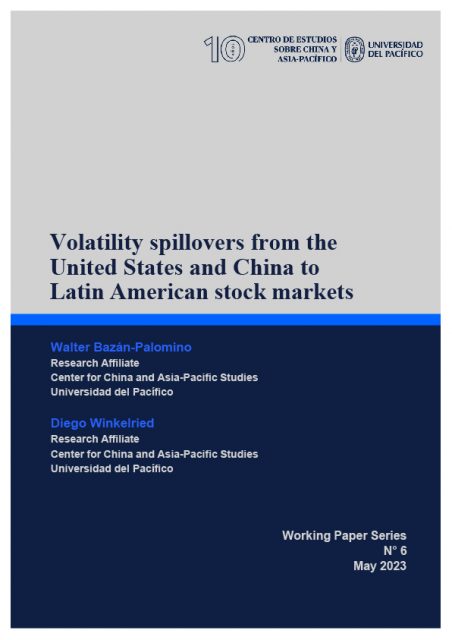Volatility spillovers from the United States and China to Latin American stock markets
Bazán-Palomino, W. and Winkelried, D. (2023). Working Paper N°6. Center for China and Asia-Pacific Studies, Universidad del Pacífico. https://cechap.up.edu.pe/wp-content/uploads/DT_Working-Paper-N°6_Winkelried-Bazan_OK.docx-2.pdf
Traditionally, the US has been the major trading and financial partner of Latin America. However, since 2000 it has lost its hegemony in the region due to China’s growing influence. In particular, China has emerged as a source of capital for Latin America integrating financial markets and, in turn, paving the way for volatility transmission. Using Heterogeneous ARDL models for range volatility,we study volatility transmission from the US and China to six main Latin American stock markets at different horizons (short-run and long-run). Although the US volatility spillover has decreased over time, it is still more relevant than that of China. This finding remains after controlling for commodity price volatility. The dynamic patterns of both the US and Chinaâs volatility spillovers can help investors to make more informed portfolio management decisions, and policymakers to monitor financial stability in the region.
